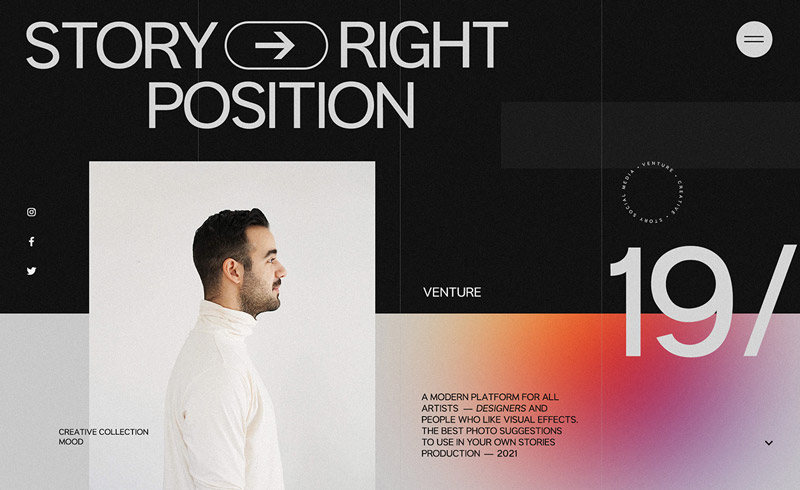Just How to Improve Individual Experience With Strategic Web Design
In the realm of digital innovation, customer experience (UX) has come to be the linchpin of effective website design. A tactical, user-centered approach, emphasizing aesthetic uniformity, intuitive layouts, and receptive design, can drastically boost a site's use and charm. As we explore these concepts thoroughly, the relevance of incorporating user responses and the role of UX in customer retention will certainly likewise be checked out, welcoming a much deeper understanding of this crucial element of web style.
Understanding the Relevance of User Experience in Web Style
The significance of website design lies not merely in visual appeals, yet essentially in the individual experience it offers. Customer experience, or UX, describes the general experience an individual has while connecting with a website or web application, specifically in regards to how comfortable and pleasing it is to make use of (Web Design In Guildford). It is a crucial aspect of website design, as it directly affects the users' impressions, actions, and general communication with the site
A properly designed website with a poor user experience is comparable to a stunning building with a badly planned inside; it may look appealing on the surface, but it stops working to serve its intended purpose successfully. It might hinder users from remaining on the web site, leading to high bounce rates, low individual interaction, and inevitably, failing to achieve the website's objectives. This highlights the significance of incorporating customer experience right into the internet style process right from the beginning.
Applying User-Centered Layout Principles
The application of user-centered design principles begins with comprehending user actions. This understanding creates the basis for producing an effective user interface design. These two crucial components, when skillfully combined, cause an improved customer experience on any kind of website.

Comprehending User Habits
Why do users behave the method they do on websites? Customer actions is dictated by a wide range of aspects, principal among them being their details needs and preferences, prior on the internet experiences, and total internet savviness. Using this expertise, internet designers can produce more effective, straightforward sites that meet the requirements of their target market, consequently improving user experience.
Effective User Interface Design

Leveraging Responsive Design for Ideal Viewing
Moving forward in the discourse, the interest currently moves to the relevance of leveraging responsive layout for optimal viewing. This involves exploring the process of implementing receptive web style and recognizing its influence on user experience. The taking place discussion aims to illuminate the advantages of optimum watching and how receptive layout facilitates it.
Executing Receptive Internet Layout
Using the power of responsive website design is a vital step in the direction of boosting user experience. To implement this effectively, internet developers must take into consideration a variety of factors. The layout must adjust effortlessly to various display sizes, from desktop monitors to smaller mobile devices. This needs a versatile grid-based system, making certain material resizes efficiently. Pictures must likewise be versatile, getting used to fit the available screen area without distortion. In addition, developers must include media inquiries, allowing the website to recognize the individual's gadget type and screen dimension. These components incorporated produce a receptive internet design that adapts to the individual's demands. While the procedure might seem complex, the end result is a much more instinctive and obtainable internet site, dramatically enhancing the individual experience.
Benefits of Ideal Watching

Moreover, responsive design can cause enhanced search engine optimization positions, as search engines favor websites that cater to several devices. Last but not least, it can minimize bounce prices and improve conversion prices as customers are less likely to desert sites that are easy to browse. Therefore, ideal viewing can substantially enhance customer experience, making it an essential facet of critical internet style.
Incorporating Easy Navigating and Intuitive Layouts
Relieve and instinct in internet site navigation develop the bedrock of individual fulfillment. If customers struggle to locate what they are looking for, they are most likely to abandon the web site and seek options.
Basic navigating menus, breadcrumb trails, and clickable buttons guide users through the website easily. Uniformity in layout elements throughout web pages also adds to intuitive navigation. Placing the search bar or the shopping cart symbol in the same place on every web page permits individuals to find these attributes rapidly.
Additionally, an intuitive layout is one that expects user requirements. It positions components and details where users anticipate them to be. This lowers the cognitive tons on customers, enhancing their overall experience on the website.
The Role of Visual Layout in Customer Experience
While the structure and layout of a website are considerable for customer experience, the visual layout plays a similarly crucial function. It is the visual layout that originally attracts the customer's interest, making it a key element in producing an immersive and interesting experience. Aesthetic layout elements such as color, typography, photos, and symbols communicate the brand's try this website message, create a mood, and guide customers' communications on the web page. A well-executed aesthetic layout can not just draw in individuals however also help them understand the material far better and browse the website more conveniently. A cluttered or irregular aesthetic style navigate here can puzzle users and lead to a negative customer experience. Web developers should purposefully utilize visual layout aspects to create a unified and user-friendly user interface that boosts the general user experience. This procedure requires a deep understanding of the target customers, their needs, and choices, in addition to the brand name's important source identity and objectives.
Situation Researches: Effective User Experience Style at work
Regardless of the theoretical understanding on customer experience design, it gets real value when applied in functional scenarios. Two significant instance studies illustrate this. Airbnb, a worldwide on the internet industry, successfully improved their individual experience by redesigning their site. By focusing on individual responses, they created a more user-friendly, easy to use user interface that substantially boosted scheduling experiences. This led to enhanced individual fulfillment and conversion prices.
The results were a substantial boost in mobile traffic and individual engagement, demonstrating the efficacy of calculated web style in boosting individual experience. These case research studies show that functional application of user experience style can generate substantial advantages.
Conclusion
Finally, strategic web design is a crucial tool in boosting user experience. By using user-centric design concepts, leveraging receptive design, integrating instinctive navigation and formats, and taking advantage of the power of aesthetic design, companies can develop sites that are involving and pleasing for individuals. Reliable website design, showcased with different effective instance studies, dramatically increases individual engagement and retention rates, confirming its important duty in digital success.
As we check out these concepts in detail, the relevance of incorporating user feedback and the role of UX in individual retention will certainly additionally be analyzed, welcoming a deeper understanding of this vital facet of web style.
It might discourage individuals from staying on the site, leading to high bounce rates, reduced individual interaction, and ultimately, failing to achieve the web site's objectives. A cluttered or irregular visual layout can lead and puzzle individuals to an unfavorable customer experience. Web developers have to strategically utilize aesthetic style aspects to develop a unified and user-friendly individual interface that improves the total user experience. The results were a substantial rise in mobile web traffic and customer involvement, demonstrating the effectiveness of calculated web design in boosting individual experience.